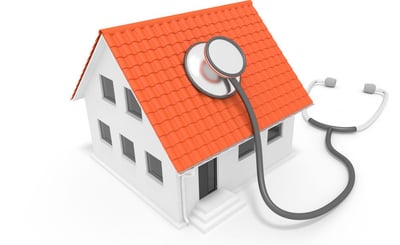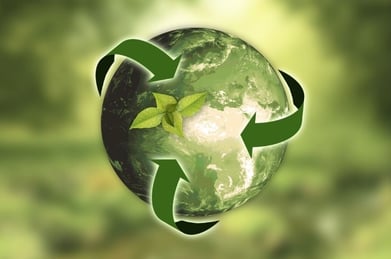Companies, non-profits, government organizations, healthcare facilities, and institutions of higher learning will soon look beyond survival to recovery, and eventually growth.
It may be difficult to visualize this given our current state of affairs, but this too shall pass and better times will come. Our culture has seemingly lost its ability to think and plan for the long-term; priorities, politics, and results are driven by short-term metrics. As such, I believe that we should use this opportunity to reinvent, rethink, and rebuild with the following attributes in mind: organizational resiliency, serving the common good, equability, and sustainability.
Sure, this all sounds great. But what do you mean?
I tend to think of nearly every problem (opportunity) in terms of the Pareto Principle, better known as The 80/20 Rule. It asserts that 80% of outcomes result from 20% of all causes for any given event. In business, for example, the goal is to identify what actions or inputs are most productive and prioritize them accordingly.

So, as it pertains to this concept, I believe there are two inputs we should focus on with respect to economic recovery, arguably the biggest global challenges of our time (COVID-19 + climate change), and the attributes I mentioned earlier (Resiliency, serving the common good, equability, and sustainability). Speaking broadly, they are 1.) Energy and 2.) Health.
No, seriously. I get it. Give me specifics.
OK, first we need to deal with the public health crisis at hand. Social distancing, wearing masks, and limiting travel — these practices are already in play and are driven by behavior. But the one thing we can do to make people feel more comfortable returning to our prior norms, such as returning to work, shopping, eating at restaurants, etc. is to invest in the health of our buildings. By focusing on healthy buildings (HBs), we will not only make people feel comfortable, we can actually help reduce the spread of the virus, let alone make ourselves more productive. This leaves our employees, customers, and any other stakeholders feeling better and more productive.
So, what constitutes a healthy building?

First, seek to understand both sick building syndrome (SBS) and building related illnesses (BRI). As defined by the EPA, SBS is a situation in which occupants experience acute health and comfort effects linked to time spent in a building, but no specific illness or cause can be identified. Indicators are discomfort such as headaches; irritated eye, nose, or throat; coughing; dry or itchy skin; nausea; difficulty concentrating; fatigue; and sensitivity to odors. Complainants report relief soon after leaving the building. Physical evidence within the building itself includes an incoming draft at the front door; hot or cold spots throughout the facility; condensation on ceiling diffusers; slippery floors; mold; hard to open doors; stuffy or stale air; unpleasant odors; the presence of insects and/or dirt; and high energy expenses. BRI is indicated by occupants complaining of symptoms such as cough; chest tightness; fever, chills; and muscle aches. These can be clinically defined and require prolonged recovery, long after leaving the building.
Holy cow. I hadn't thought of all this being related to buildings. What are the primary causes of SBS and BRI?
Poor HVAC performance such as inadequate ventilation and negative building pressure.
OK so, how can I invest to make my building healthy as you suggest?
This is a loaded question. There are A LOT of things you can do. I'll try to keep this brief.
First and foremost, make sure the HVAC system has been well maintained. And think about the health issues described above. Are these currently problems? If not, you may not need to do much, though there's certainly always room for improvement. If these are problems, consider consulting with an expert on HVAC and healthy buildings. Make sure they're independent of whomever is responsible for your maintenance and certified to do so. They'll likely perform an investigation and assessment on the HVAC system, as well as indoor air quality. The factors to be evaluated (and adjusted) on the HVAC system include but aren't limited to verifying equipment operation; checking building pressure; inspecting filters, belts, and fans; and finally asking questions about comfort. The primary factors that influence indoor air quality are the occupants; the HVAC system; pollutants and their pathways; and internal and external contaminants such as chemicals, smoke, grease, molds, and pollen.

After these initial assessments are complete and adjustments made, get some form of system to monitor building health. Think of these monitors like having a FitBit for your building; empower yourself with data to maintain proper health. There are plenty of options out there and what you install should monitor some of the following attributes: differential building pressure (the #1 indicator of overall building health); C02; relative humidity; and temperature. Monitoring these core attributes will cover the 80/20. Other important, albeit less impactful, attributes to monitor may include volatile organic compounds, water quality, noise pollution, occupancy, lighting quality, and energy usage.
Building health alone covers more ground than I imagined. But you also mentioned energy. What can I do there?
Invest in Energy Efficiency (EE), Renewable Energy (RE), and Clean Energy Transportation (electric vehicles or EVs).
Why? And, how does this relate to helping with economic recovery?
There are a number of reasons. Quite honestly, too many to cover without writing a book. So, again, I'll focus on the 80/20.
The first, and most pressing is economic opportunity. Energy, and the cost of it, flows through everything. Think about that. The cost. of. energy. flows. through. everything. As far as EE goes, the cost of energy saved is the lowest cost of energy. This is a no-brainer with a guaranteed ROI. Further, the cost of RE is at or below the cost of traditional fossil-fuel based sources, depending on the state, scale, and application. And EE, RE, and EVs are driven by technology — not sources of fuel. In terms of economic growth, every measure of kWh or BTU saved by EE or generated domestically by RE translates into wealth we are not exporting to foreign nations. In other words, we keep more of our own money, thus further strengthening our own economy. Put that into perspective, relative to the cost of energy, which is buried in the cost of... oh yeah, EVERYTHING!
Making the transition is a moral imperative. The science is clear and indisputable. We are harming our earth. If we do not reverse course, soon, the damage will be irrecoverable. Remember how quickly COVID-19 swept the globe and how we're still reeling from its devastating impacts. Climate change is a crisis in slow motion. Yet, unlike this virus and the subsequent public health crisis, the impact will change the face of the earth — and humanity —forever. I cannot, in good conscience, put that burden on my children and grandchildren. We have borrowed at their expense for far too long.
Making the transition is a matter of national security. How many global conflicts have been fought over the allocation of natural resources? This strategy not only protects the lives of future generations through preserving the earth but, quite literally, may prevent them from fighting avoidable wars. When we leverage technology for our energy, we are not subject to the whims of foreign nations and their strategic interests. As the world seems increasingly less stable, this also seems like a no-brainer, let alone the cost savings relative to current military spending. Simply put, an investment in clean energy is an investment in our own national security.
Finally, consider how the industrial revolutions of the past have shaped our great nation: the emergence of water, steam, and coal as sources of power and how they expanded existing or developed new industries such as railroads, steel manufacturing, electric lighting, the automotive industry, transportation, and the digital revolution — which brought forth widespread globalization, low-cost economies, and new business models. What is next? I contend we are in the beginning of the Clean Energy Revolution. And when we have the benefit of hindsight, I truly believe it will dwarf those prior examples in terms of how it changes the world. Do we want to be the leaders of this revolution? Or will we continue to cede this opportunity to other nations to embrace? And, if we do not lead this New Age, what's next for America? I can't think of anything that compares. Let's dismiss coal and oil to embrace the future. The potential for job growth and opportunities for continued innovation are beyond comprehension.

It is abundantly clear that investing in Clean Energy will make our great nation more resilient, equitable, sustainable, and resilient. Much like Google didn't build its empire with fax machines, we won't rebuild our economy by relying on fossil fuels. We cannot subsidize our way out of this. So, let us learn from our current crisis as we begin planning for a better future. None of us can carry the world on our shoulders. But we can carry our world on our shoulders. If we can do our part individually, collectively we can make America — let alone the world — a better place if not for ourselves, then for future generations.
